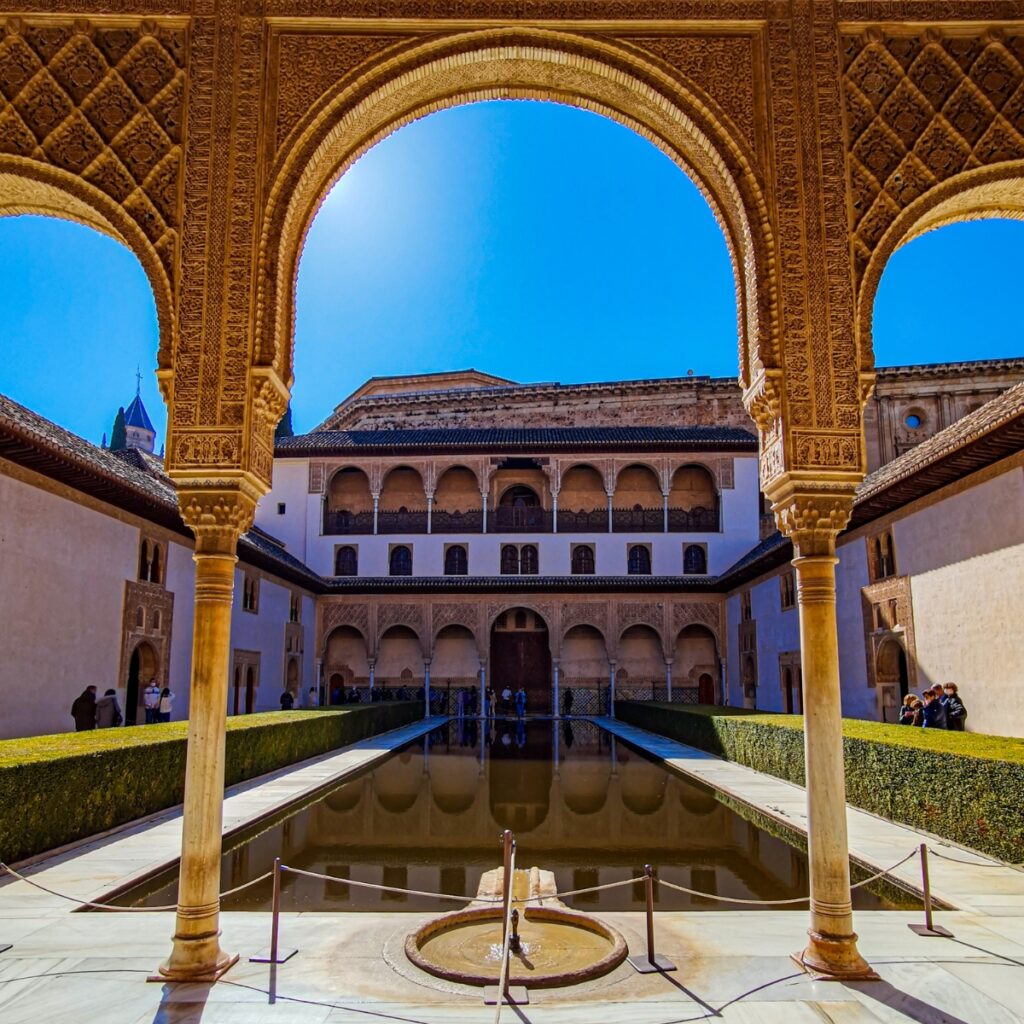Granada is a city that you must visit at least once in your life. It is one of those places that stays etched in your memory.
It is a city that you can visit in 4 or 5 days, and that has a little of everything, history, art, gastronomy, beauty…. and a unique atmosphere. If you are planning to visit this wonderful city, we leave you a list with what we consider the most typical, grand, and emblematic corners.
Here is our list of the 10 things to do in Granada essential to experience it to the fullest.
Essential Monuments and Historical Sites
The Alhambra and the Generalife

Of course, if you come to Granada you must visit the Alhambra, considered one of the best monuments in Spain.
In summary, the Alhambra is an old palatial city and fortress where the Nasrid kings lived between the 12th and 15th centuries, it is made up of:
- The Alcazaba: The walled military city.
- The Nasrid Palaces: The elegant palatial rooms. They have an assigned visiting schedule and it is essential to book tickets well in advance.
- The Generalife gardens: A place to rest and enjoy.
- Patios: The Patio de los Leones is the most beautiful and famous.
Key tip: Book tickets online for the Alhambra in advance to avoid wasting time in the queue or lack of availability. If there are no tickets available for the Nasrid Palaces, you can opt for a guided tour
The Granada Cathedral and Royal Chapel

Another of the monuments that you should visit if you come to Granada is the Cathedral, whose full name is Santa y Apostólica Iglesia Catedral Metropolitana Basílica de la Encarnación de Granada, is of Renaissance and Baroque style.
It is an essential monument within the historic center.
- Royal Chapel: This is one of the most important monuments, it is where Isabel I of Castile and Fernando II of Aragon (the Catholic Monarchs) decided to be buried.
- Cost: Entering the Cathedral has a cost of €6
La Madraza
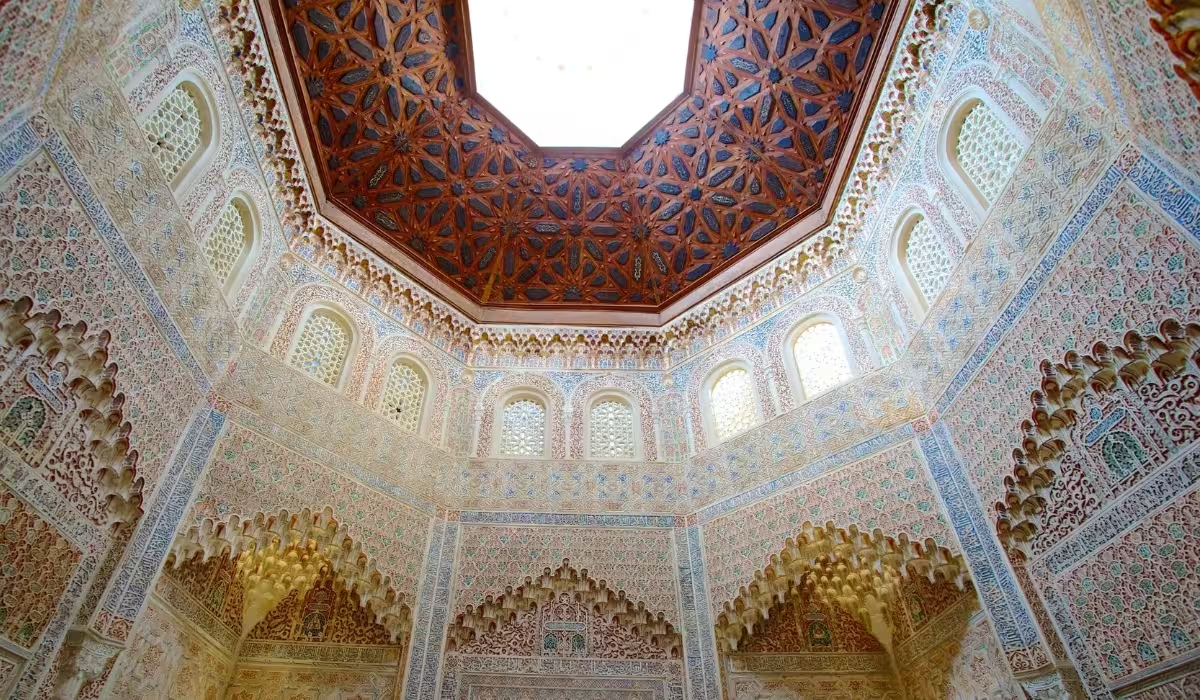
Located in front of the Royal Chapel, the Madraza (was the first Islamic university) is a treasure that reflects the Muslim legacy.
It was founded in 1349 by Sultan Yusuf I and taught classes in astronomy, mathematics and literature, and is considered to have housed the first public university in al-Ándalus. Inside is one of the best preserved Nasrid oratories in the city.
Corral Del Carbón

It is an alhóndiga (public building that housed merchants and their products) from the 14th century. It is the only Arab alhóndiga that remains in the Iberian Peninsula. As the most peculiar characteristic, we highlight its facade with a beautiful Andalusian arch.
Dar-al-Horra Palace
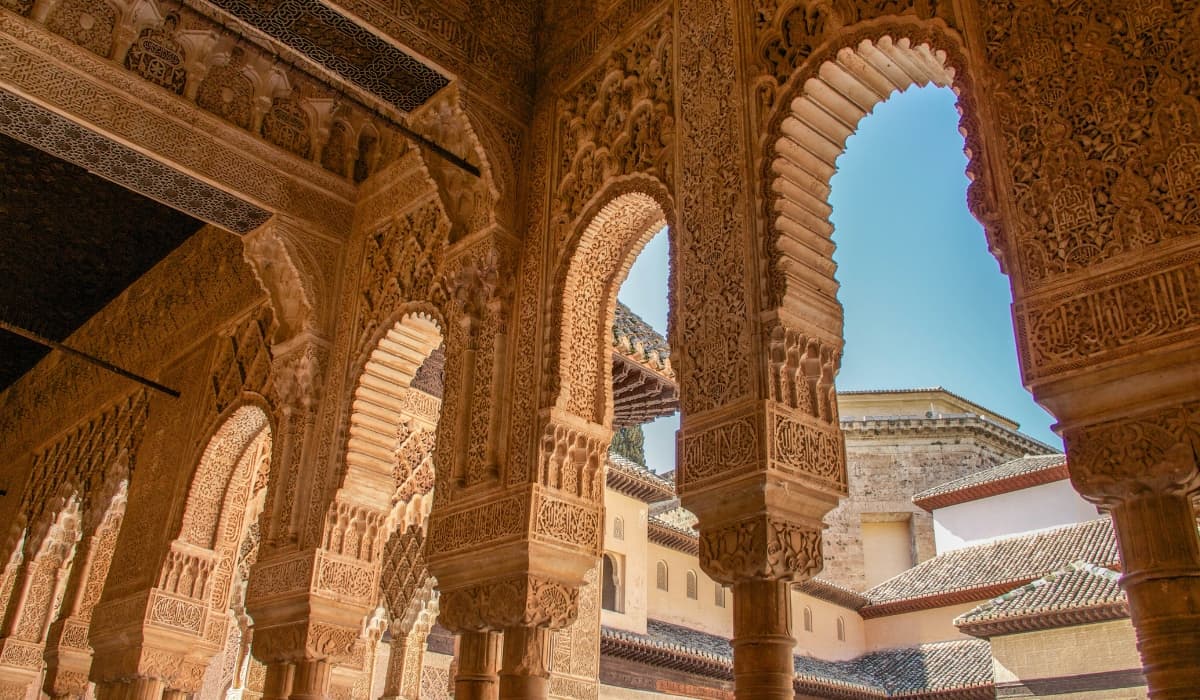
It is a palace in the Nasrid style, which is located in the Upper Albaicín. It was the residence of the founder of the Nasrid dynasty. It is an Asset of Cultural Interest for its architecture.
Monastery of La Cartuja

It is a monument that represents the art of the Spanish Renaissance and whose origins date from the 16th century.
Gonzalo Fernández de Córdoba, known as the Great Captain, was buried in this monastery.
Tours of Neighborhoods and Streets with History
Albaicín
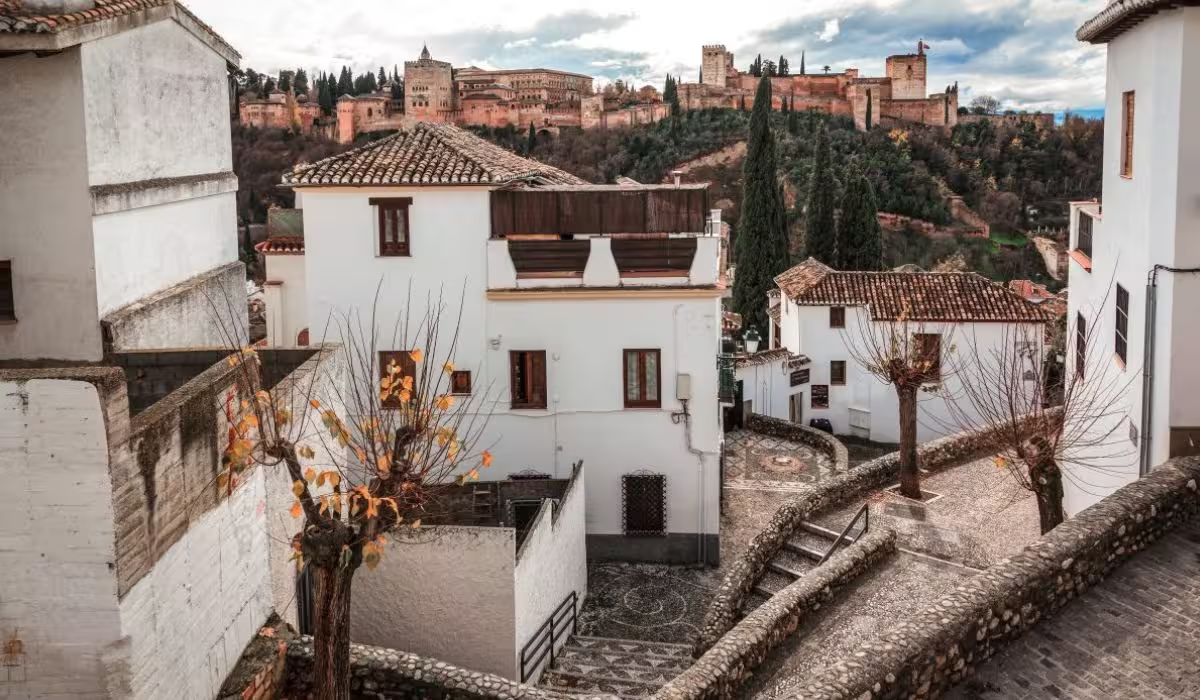
If you come to Granada, you cannot miss a walk through the Albaicín, an ancient mythical Arab neighborhood of the city.
- Characteristics: It has narrow, steep and cobbled streets, white houses dotted with bougainvillea. To enjoy it you have to wander and get lost in this neighborhood.
- Mirador de San Nicolás: It is a high point of the neighborhood and from where you can enjoy the best views of the Alhambra.
Sacromonte
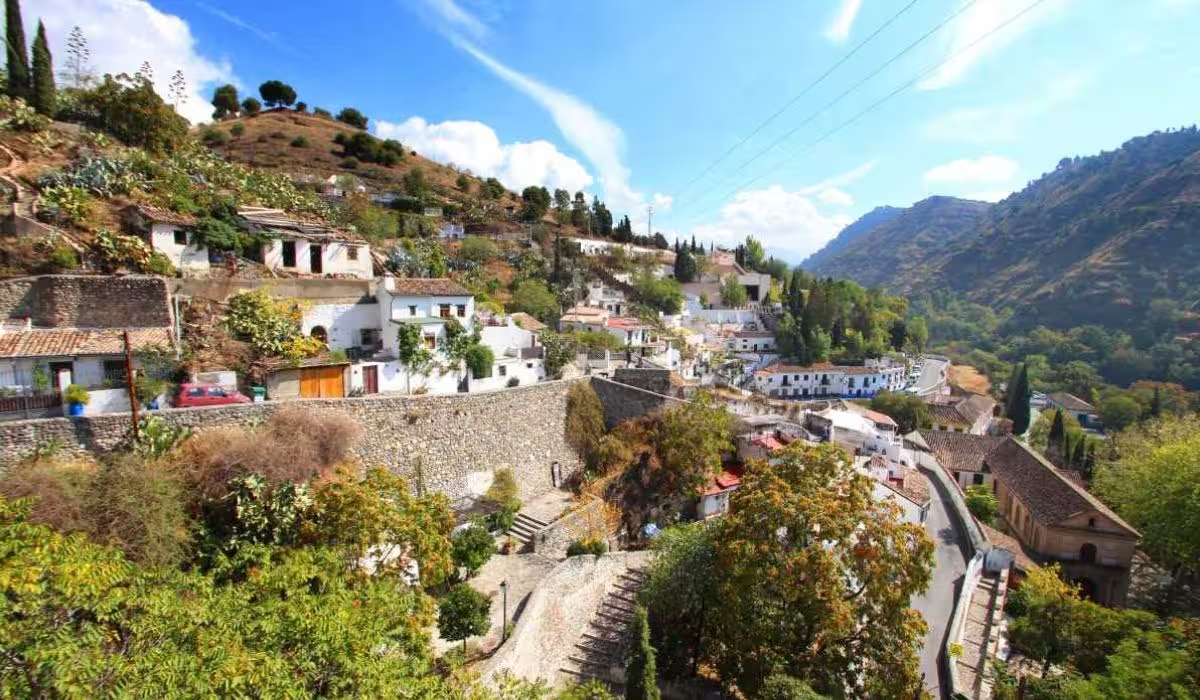
Another neighborhood that is next to the Albaicín and that you should visit is Sacromonte, famous for its cave-houses.
Its caves were the homes of the gypsies who accompanied the Catholic Monarchs.
- Flamenco: It is known for its flamenco shows, called zambras, which take place in its caves.
- Visits: If you want to know a little more about the history and the caves, it is highly advisable to visit the Museo Cuevas del Sacromonte (€5)
El Realejo
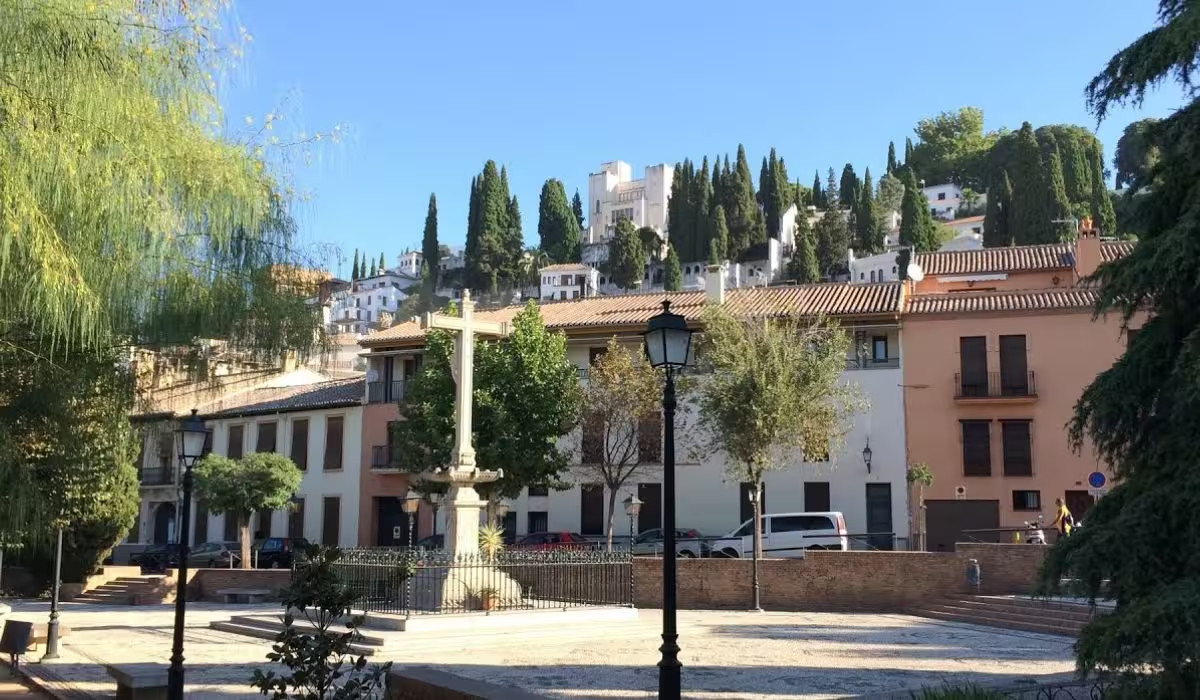
Another of the famous neighborhoods of the city, which is in the heart of the city is the Realejo. which is located at the foot of the Alhambra and which is one of the most authentic areas of the city.
It was born in Muslim times as «Garnata al-Yahud» (home or Granada of the Jews).
It has a rich history and cultural legacy.
Within the Realejo neighborhood we advise you to see:
- Campo del Príncipe.
- Church of the Virgen de las Angustias.
- Church of San Cecilio (patron saint of Granada).
Calle De Las Teterías (Calle Calderería Nueva)
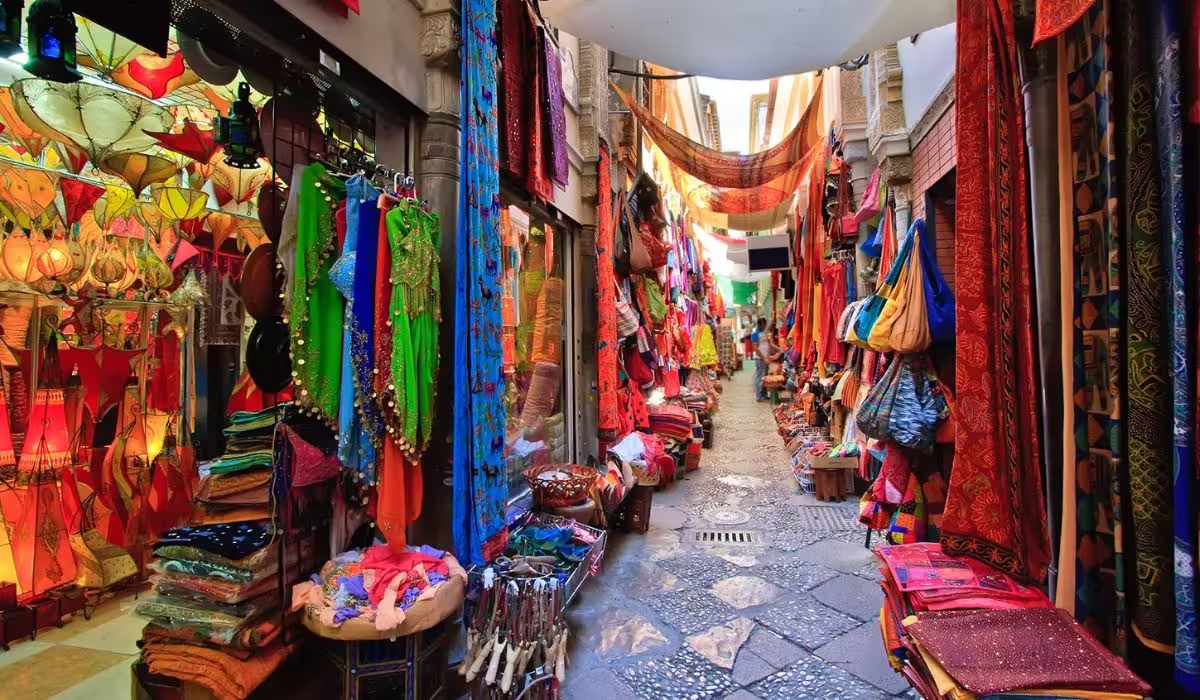
One of the activities to do in Granada is to walk along the street known as “calle de las teterías” an icon of the city, located in the heart of the Albaicín, and which has several Arab-style tea shops.
It is recommended to make a stop to have a tea and try some delicious Arab pastries or a crepe. It is also a good place to buy some souvenirs.
Historic Center and Carrera Del Darro
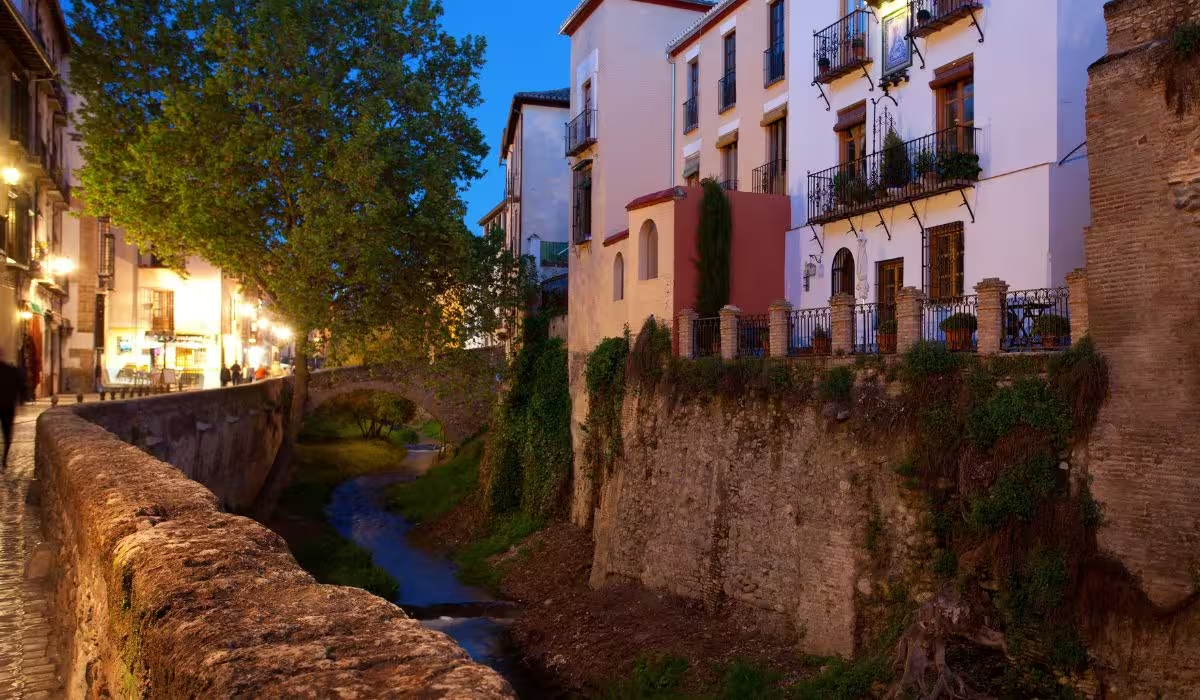
It is essential to tour the old town.
- Tour: Walking through the old town includes visiting the Cathedral, haggling in the Alcaicería souk, and touring squares such as Plaza Nueva and Rib-Rambla.
- Carrera del Darro: Considered one of the most beautiful streets in the city. It has buildings from the 16th century, convents and Arab houses.
- Alcaicería: The old silk market during the Arab era, a labyrinth of streets perfect for acquiring crafts.
- Paseo de los Tristes: A romantic avenue with incredible views of the Alhambra. Historically, in the 19th century, it was the route of funeral corteges to the San José cemetery
Activities and Experiences
Go for Tapas – They’re Free!
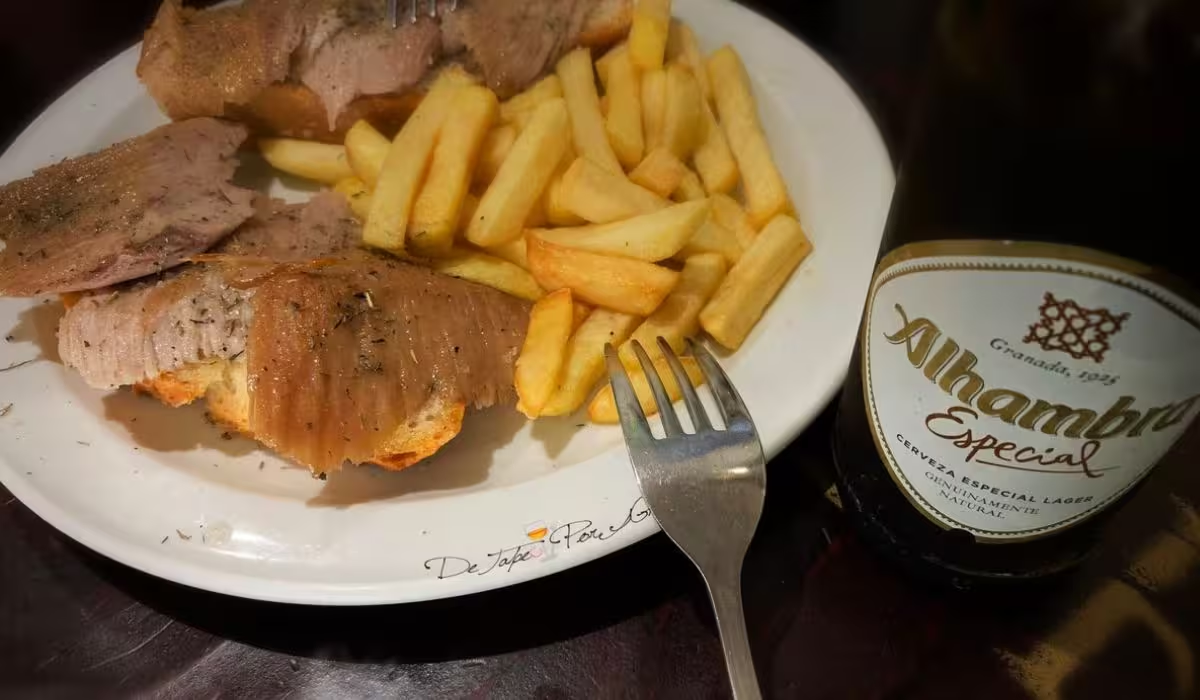
Another of the activities to do in Granada, is going for tapas is very typical of Granada. The tradition allows you to order a drink and receive in return a generous tapa as a gift.
- In the Granada tapas bars you will almost always find some of these delicious dishes: roast ham, fried fish, paella, Russian salad, broken eggs, croquettes, salmorejo and gazpacho (in summer) and sausages.
Hammam Al Ándalus
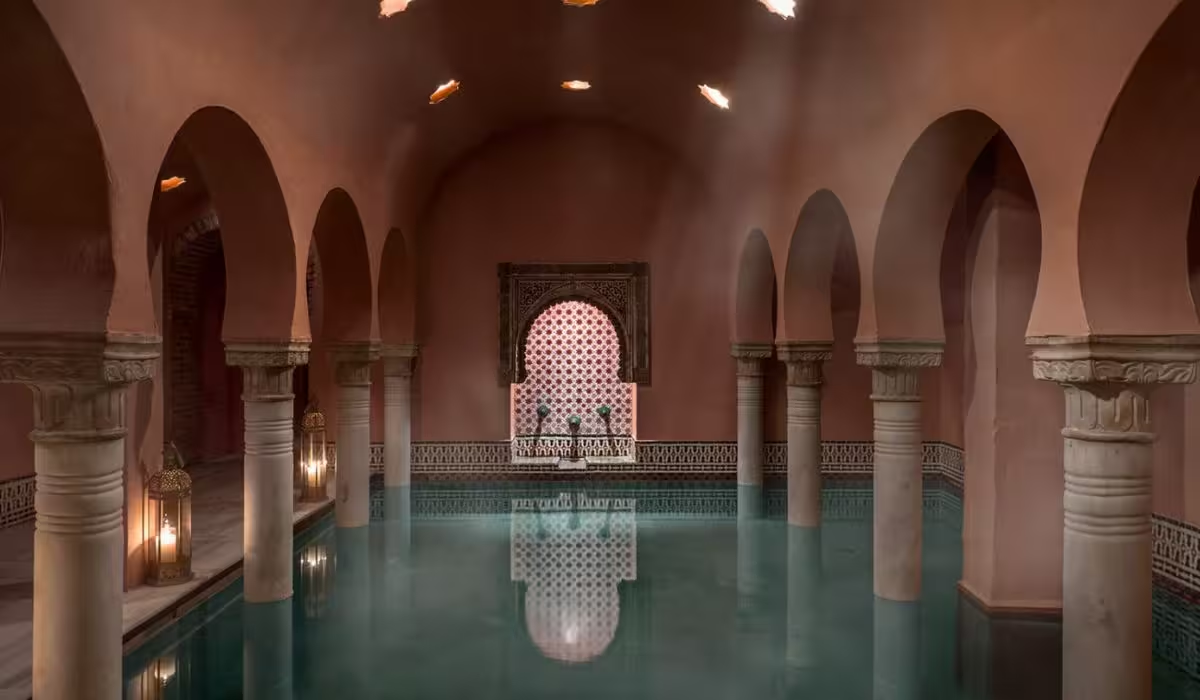
To end a day of activities and relax, we recommend the Arab baths. They have a lot of charm and will transport you to the time of the splendor of Al-Ándalus.
The tour includes rooms with pools of different temperatures, steam rooms and massage rooms.
Flamenco Show
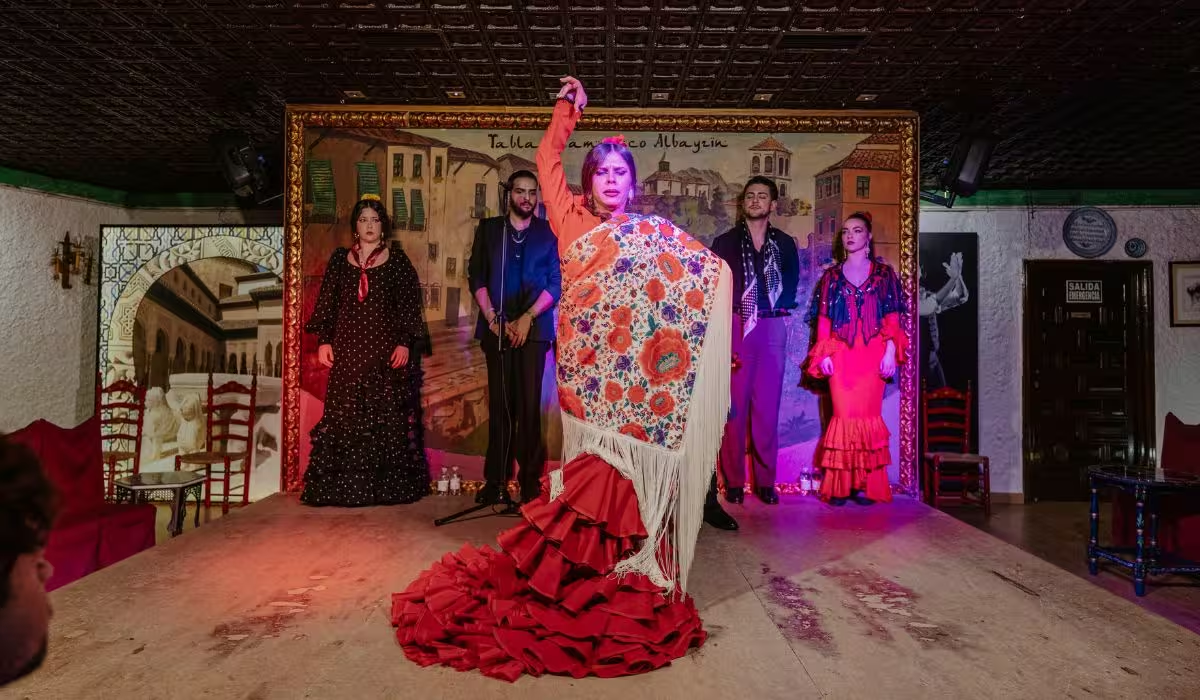
And of course, another of the best activities you can do is visit the flamenco tablaos of Albaicín or Sacromonte and see the zambras shows is part of the soul of Granada.
Free Tours
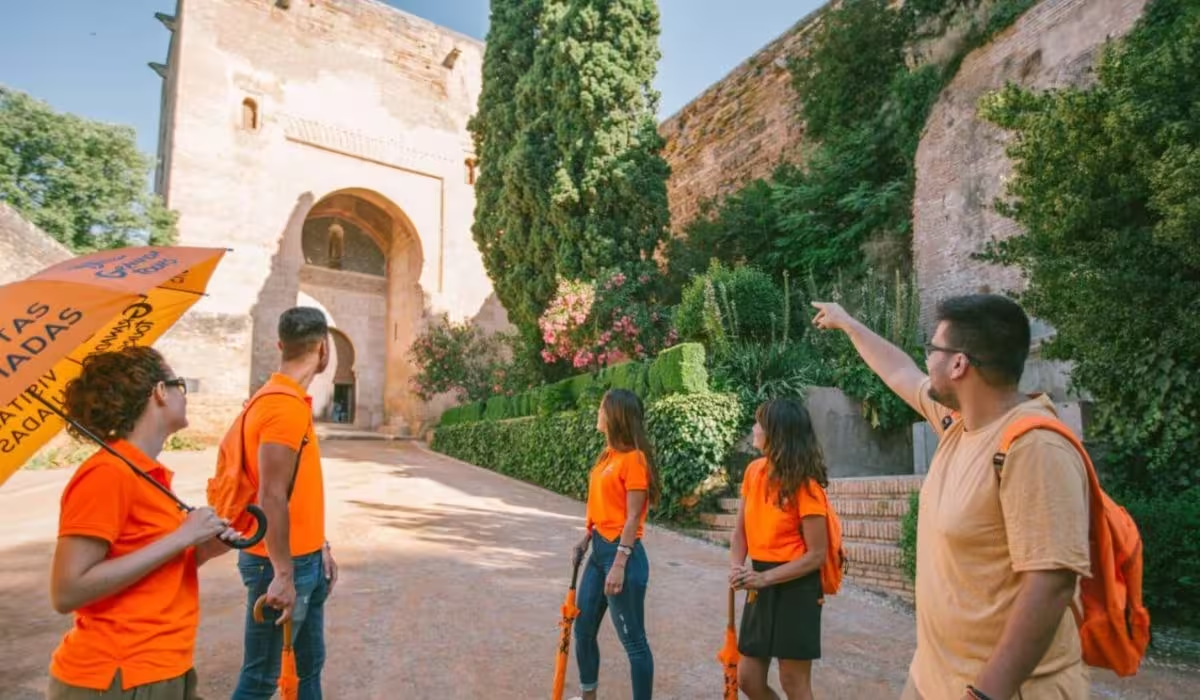
It is advisable to join a free tour (free tour) or take a private route, especially if it is the first time you visit Granada.
There are free tours ideal to get to know the Albaicín, the historic center, the Alhambra, or the Realejo neighborhood with a local guide.
Other Points of Interest and Excursions
Science Park
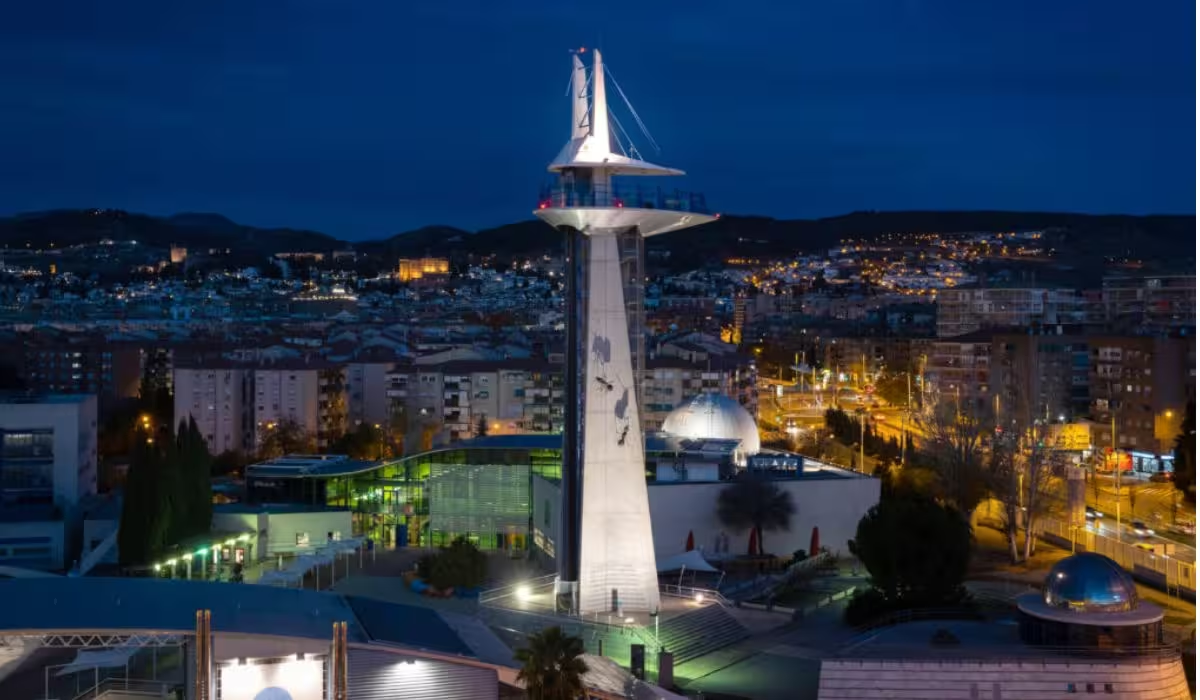
One of the activities to do in Granada, especially if you come with children, is to go to the science park, an interactive museum. It has exhibitions and workshops on physics, chemistry, biology, geology and robotics, highlighting the Planetarium area.
Excursions from Granada
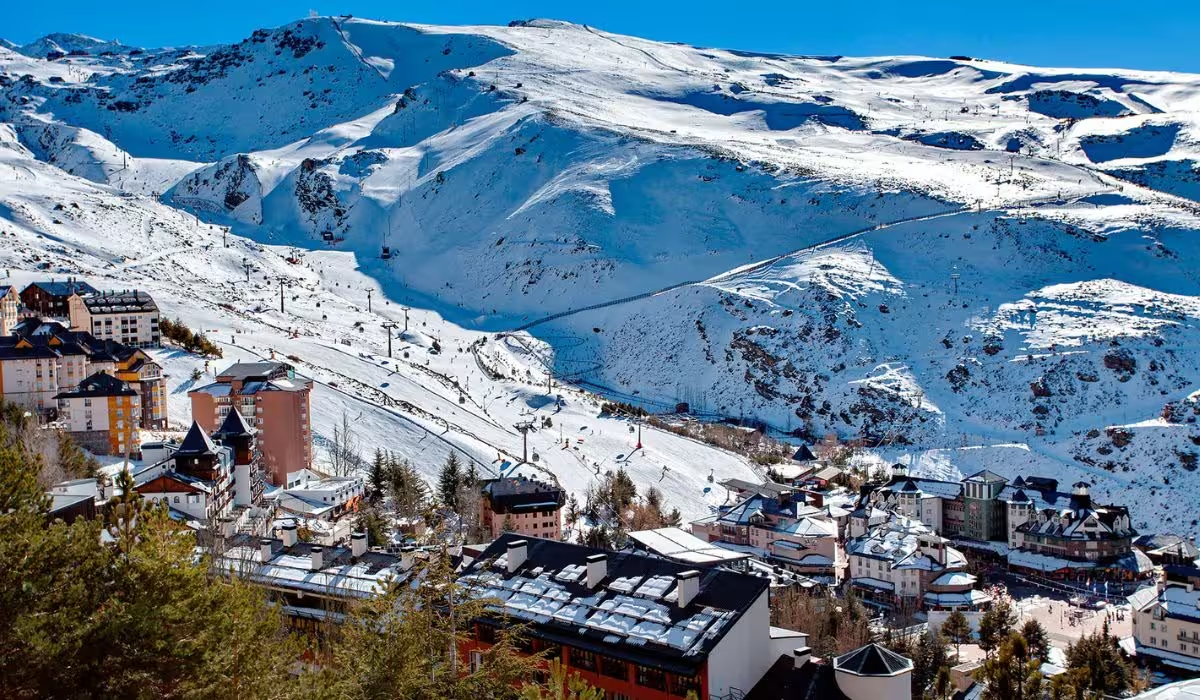
- Sierra Nevada: Ideal if you come in winter and you like skiing.
- La Alpujarra. It is characterized because it is a region formed by some white villages of Moorish origin, cobbled streets and flat-roofed houses. Surrounded by mountains and ravines, it has unique landscapes, natural trails and a rich traditional gastronomy
Local Gastronomy (What to Eat)

In addition to tapas, Granada’s gastronomy stands out for its Arab influence. Do not hesitate to try some of the typical foods of Granada:
- Sweets: Piononos, traditional sweet made with a layer of sponge cake and cream. We also highlight the soplillos of the Alpujarra, the curd of carnival, roscos de vino, tortas de la virgen (in September), huesos de Santo (available in the festivity of all the Saints), pestiños and leche frita (very common in Holy Week) and the tocinos de cielo.
- Savory dishes: Zalamandroña (cold salad), bread crumbs, olla de San Antón (very common in the month of January), broad beans with ham, Alpujarreño dish, aubergines with honey, Sacromonte omelette, or remojón granadino.
- Tapas: Although they are not considered Granada dishes,

